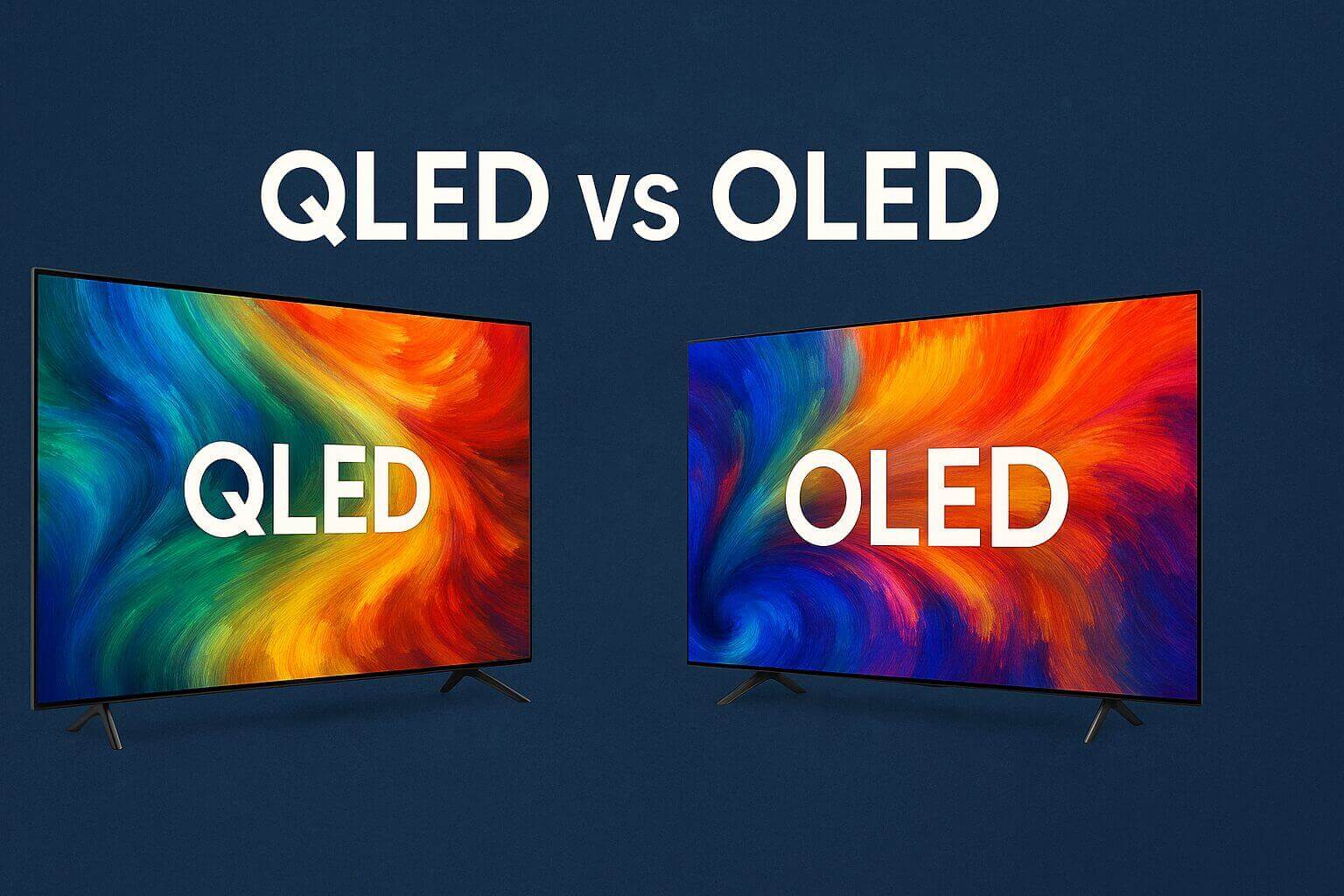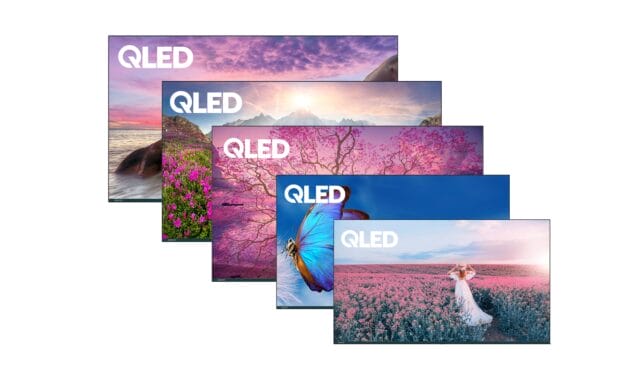
Choosing the right display technology has never been more important for businesses. Whether you're investing in digital signage, interactive collaboration displays, or presentation screens, the performance of your display impacts everything from visual impact to engagement and productivity. Whether you're investing in non-interactive displays for video meetings, presentation spaces, or front-of-room installations, the performance of your display impacts everything from clarity and engagement to productivity and user experience.
Two leading technologies dominate the market: QLED and OLED. But what is the difference between OLED and QLED? And which one should you choose for your unique environment?
In this guide, we’ll compare QLED vs OLED displays, explore their pros and cons, and help you make the right choice for your organisation.

QLED stands for Quantum Dot Light Emitting Diode. QLED displays use an LED backlight that shines through a Quantum Dot layer, which enhances colour and brightness. The result is a display that can achieve exceptionally high brightness levels and vivid colour reproduction - making it a popular choice for both consumer TVs and business displays.
OLED stands for Organic Light Emitting Diode. Unlike QLED, OLED displays don’t require a backlight - instead, each individual pixel emits its own light. This means that black is produced when a pixel is switched off. The result? Outstanding contrast, incredible depth, and excellent viewing angles in dynamic consumer environments and home cinema.
When selecting display technology for your business, it’s important to understand how QLED and OLED perform across several key factors - from brightness and contrast to colour accuracy, burn-in risk, and cost-effectiveness.
Here’s a quick comparison to help guide your decision:
| Feature | QLED | OLED |
| Brightness | Very high - excellent for bright environments | High, but lower than QLED - best in controlled lighting |
| Contrast & Black Levels | Strong contrast, but blacks not as deep as OLED | Perfect blacks - individual pixels can switch off completely |
| Colour Reproduction | Vivid, punchy colours - great for signage impact | Extremely accurate colours and subtle gradients |
| Viewing Angles | Improved over LED, but some colour shift at wide angles | Exceptional - minimal colour/brightness loss from any angle |
| Burn-In Risk | No burn-in risk - ideal for static content | Some risk of burn-in with static logos / content over time |
| Durability for 24/7 Operation | Very robust - suitable for high-usage signage | Not ideal for continuous static displays or 24/7 operation |
| Lifespan | Excellent - long operational life | Excellent - but lifespan can be impacted by burn-in if misused |
| Cost | More cost-effective, especially at large sizes | Premium pricing - delivers outstanding visual impact |
| Best For | Digital signage, retail displays, meeting rooms, education | Luxury retail, premium signage, executive boardrooms |
Still deciding? Use this table as a starting point, then let Avocor guide you to the best-fit solution.

There’s no universal answer - the right choice depends on your specific environment and use case.
For organisations that don’t require touch functionality, non-interactive display options like the Avocor K Series provide a high-performance alternative to interactive displays, optimised for professional video and presentation use.
Whether you’re designing classrooms, collaboration spaces or signage networks, choosing the right display tech is critical. If you’re unsure which fits your needs, our team can help.
QLED vs OLED is one of the most common display technology comparisons today - but the question isn't simply which is better, it's which is better for your business.
OLED delivers breathtaking contrast, true blacks, and exceptional viewing angles - ideal for premium visual installations where visual impact matters above all else, such as home cinema.
QLED provides superior brightness, colour vibrancy, and long-term durability - making it the more practical choice for professional applications, video meetings, static content, digital signage, and high-usage environments where performance and reliability are key.
At Avocor, we understand that no two organisations have the same display requirements. That’s why our product portfolio is carefully engineered to offer the right technology for the right purpose - whether it’s the non-interactive QLED-based K Series for professional video meetings, presentations, and eye-catching ad-hoc digital signage, or our G Series and E Series interactive displays designed for seamless collaboration.
Ready to upgrade your meeting rooms or signage? Use our product configurator to find your perfect match or speak with our team for expert advice.
OLED uses self-emitting pixels for perfect blacks and contrast; QLED uses a Quantum Dot layer and backlight for higher brightness and vivid colours.
OLED offers superior contrast and viewing angles; QLED delivers higher brightness and better durability for static content. The "better" choice depends on your use case.
No - QLED displays do not suffer from burn-in, making them ideal for digital signage and static content.
For most digital signage, QLED is the safer, more practical choice. OLED can be used selectively for premium, high-impact installations.
QLED is better suited to static content, as it carries no risk of burn-in.
Keep up to date with all the latest from Avocor and partners and get information on upcoming events and exciting product news.
Speak to one of our product specialists and find the perfect solution for you.